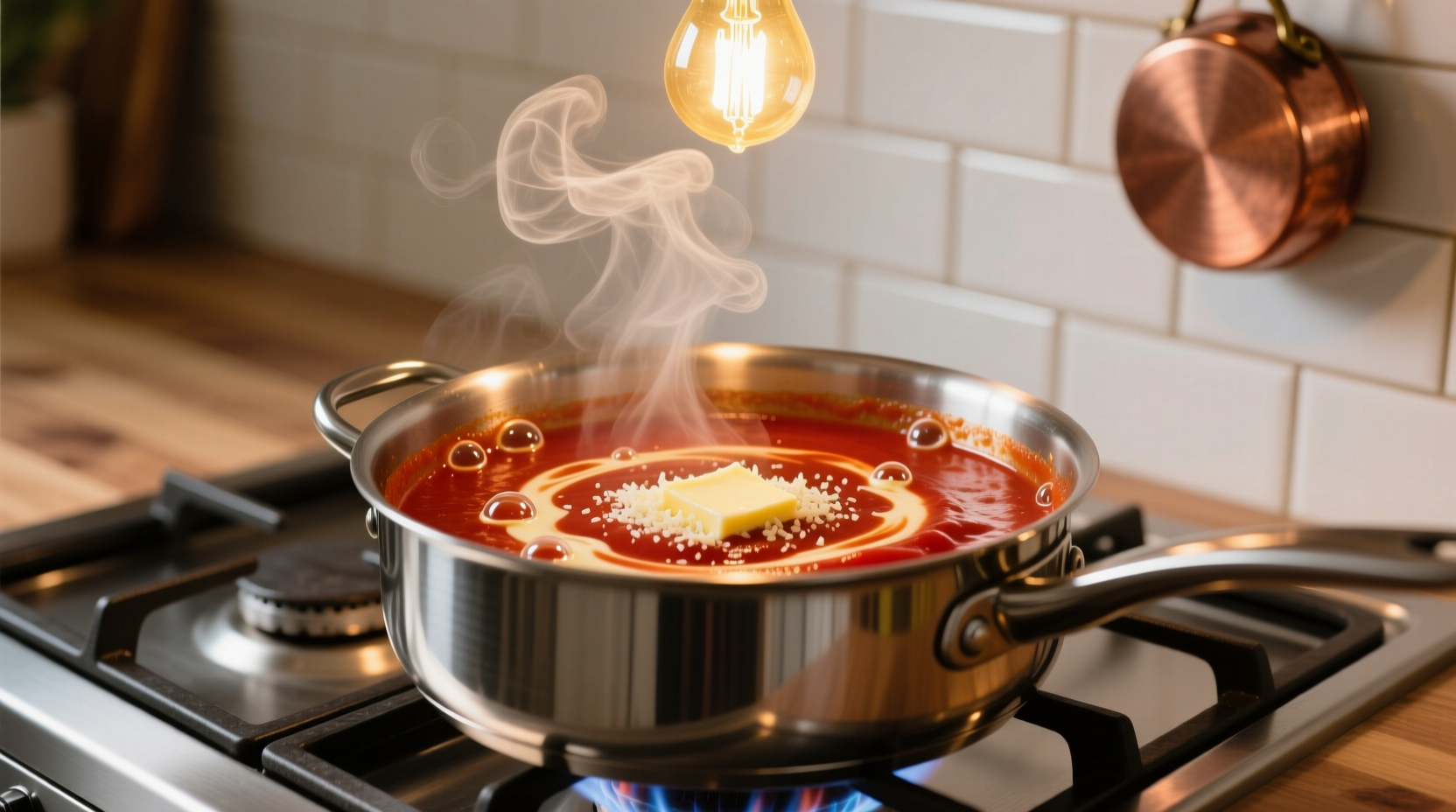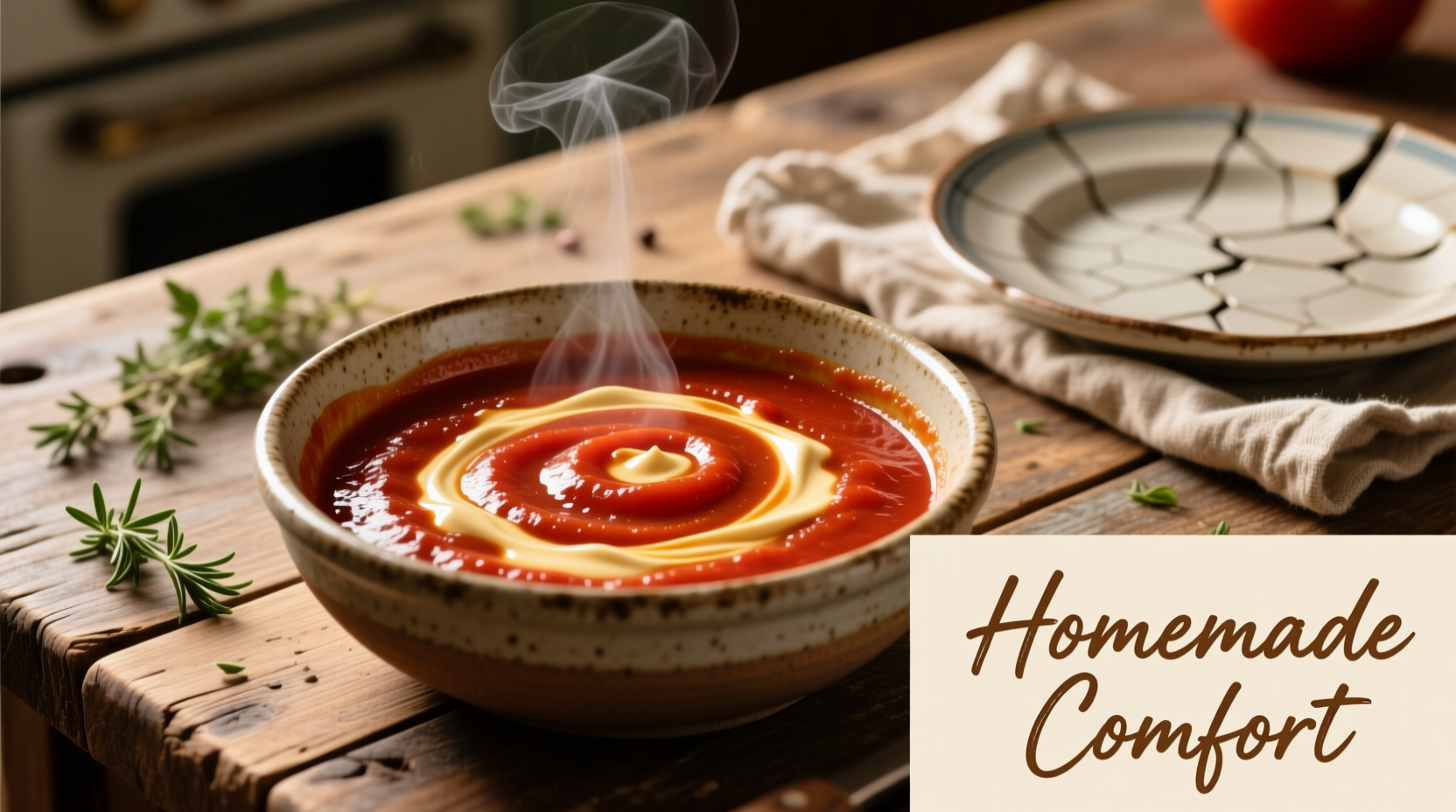Tomato sauce with cream combines the bright acidity of tomatoes with the rich smoothness of dairy, creating a versatile sauce perfect for pasta, chicken, or seafood dishes. The key to success is using heavy cream (36-40% fat) added at the right temperature to prevent curdling, with a ratio of 1 cup cream to 2 cups tomato sauce for optimal balance.
Discover how to create restaurant-quality creamy tomato sauce at home with this comprehensive guide. Whether you're a beginner cook or looking to refine your technique, you'll learn the science behind perfect emulsification, avoid common pitfalls like curdling, and master variations that work with any dish.
The Science Behind Perfect Tomato-Cream Fusion
Combining acidic tomatoes with dairy seems counterintuitive—after all, acid typically causes dairy to curdle. The secret lies in temperature control and fat content. According to food science research from America's Test Kitchen, heavy cream (with 36-40% fat content) maintains stability better than lower-fat alternatives when introduced to acidic ingredients.
Professional chefs like Antonio Rodriguez emphasize: "The critical window is temperature management. Never add cold cream directly to boiling tomato sauce. Instead, reduce your tomato base first, remove from heat, then gradually temper the cream." This technique prevents the proteins in dairy from coagulating and separating.
| Cream Type | Fat Content | Best For | Stability with Tomatoes |
|---|---|---|---|
| Heavy Cream | 36-40% | Rich pasta sauces | ★★★★★ |
| Half-and-Half | 10.5-18% | Lighter soups | ★★☆☆☆ |
| Whole Milk | 3.25% | Creamy tomato soup | ★☆☆☆☆ |
| Crème Fraîche | 28-48% | Finishing touch | ★★★★☆ |
Step-by-Step Preparation Guide
Follow this professional technique for flawless creamy tomato sauce every time:
Stage 1: Building the Flavor Foundation
Sauté 2 minced garlic cloves in 2 tablespoons olive oil over medium-low heat until fragrant (about 1 minute). Add 1 finely diced shallot and cook until translucent. This gentle cooking prevents bitterness that can occur when garlic burns.
Stage 2: Tomato Base Development
Add 28 ounces of high-quality crushed tomatoes (preferably San Marzano variety). Simmer uncovered for 20-25 minutes to reduce acidity and concentrate flavor. Stir occasionally to prevent sticking. According to culinary research from Serious Eats, this reduction step lowers the pH from approximately 4.2 to 3.8, making it more compatible with dairy.
Stage 3: Cream Integration
Remove sauce from heat. Cool for 5 minutes, then gradually whisk in 1 cup heavy cream that's been brought to room temperature. Return to very low heat and warm gently—never boil. Season with salt, freshly ground black pepper, and 1 teaspoon sugar to balance acidity.

Troubleshooting Common Problems
Even experienced cooks encounter issues with tomato-cream sauces. Here's how to solve them:
Problem: Sauce is curdling or separating
Solution: This happens when temperature differences are too extreme. If separation occurs, immediately remove from heat and blend with an immersion blender. For prevention, always temper the cream by adding a small amount of warm tomato sauce to the cream first, then gradually incorporate back into the main sauce.
Problem: Sauce is too acidic
Solution: Add 1/4 teaspoon baking soda (not sugar) to neutralize excess acid. Start with a small amount and taste as you go—too much creates a soapy flavor. Alternatively, simmer longer to naturally reduce acidity.
Problem: Sauce is too thin
Solution: Create a beurre manié by mixing equal parts softened butter and flour. Whisk small amounts into the sauce until desired thickness is achieved. Avoid cornstarch, which can create an artificial texture.
Historical Evolution of Cream in Tomato Sauces
Tomato sauce with cream represents a fascinating culinary evolution. While tomatoes arrived in Europe from the Americas in the 16th century, cream wasn't commonly added to tomato sauces until the late 19th century. According to food historians at Oxford Research Encyclopedia of Food, the combination gained popularity when French chefs began adapting Italian tomato preparations for French palates that preferred richer sauces.
The modern version we know today emerged in mid-20th century America, where Italian-American chefs created hybrid dishes like "pink sauce" (a blend of marinara and Alfredo) that became popular in the 1980s. This evolution demonstrates how culinary traditions adapt across cultures and time periods.
When Cream Works (and When It Doesn't)
Understanding context boundaries prevents culinary disasters. Cream enhances certain applications while ruining others:
- Perfect Pairings: Fettuccine, baked chicken dishes, seafood pasta, pizza white sauce variations
- Avoid Cream When: Making pizza sauce (moisture causes sogginess), cooking at high temperatures for extended periods, or creating sauces for egg dishes (creates texture conflicts)
- Temperature Threshold: Never exceed 180°F (82°C) after adding cream—this is the critical point where dairy proteins begin to coagulate
Flavor Variations to Try
Once you've mastered the basic technique, experiment with these professional variations:
Roasted Garlic Cream Tomato Sauce
Add 1 whole head of roasted garlic to the base. The caramelized sugars balance tomato acidity beautifully. Perfect with mushroom pasta.
Spicy Arrabbiata Cream Sauce
Infuse 1/4 cup cream with 2 dried Calabrian chilies for 30 minutes, then strain before adding to tomato base. Creates a sophisticated heat that doesn't overwhelm.
Seafood Cream Tomato Sauce
Add 1/4 cup seafood stock and 1 tablespoon tomato paste to the base before incorporating cream. Ideal for linguine with shrimp.
Storage and Reheating Guidelines
Proper storage maintains quality and food safety:
- Refrigeration: Store in airtight container for up to 4 days. Place plastic wrap directly on sauce surface to prevent skin formation
- Freezing: Freeze without cream for best results. Add cream when reheating. Properly stored, sauce base lasts 6 months frozen
- Reheating: Warm gently over low heat, stirring frequently. If separation occurs, whisk in 1 teaspoon cornstarch slurry (1:1 cornstarch:water)
Nutritional Considerations
A standard serving (1/2 cup) of creamy tomato sauce contains approximately:
- Calories: 120-150
- Fat: 8-10g (5g saturated)
- Carbohydrates: 10-12g
- Protein: 2-3g
- Vitamin C: 25% of daily value
Data sourced from USDA FoodData Central. For lighter versions, substitute half the cream with evaporated skim milk, which maintains texture while reducing fat content by 30%.
Frequently Asked Questions
Can I use milk instead of cream in tomato sauce?
Yes, but with limitations. Whole milk can work in tomato soup applications when added carefully, but it lacks the fat content needed for stable pasta sauces. For best results, reduce the tomato base first, cool slightly, then add room-temperature milk gradually while keeping temperature below 160°F (71°C). Expect a thinner consistency and higher risk of curdling compared to cream.
Why does my creamy tomato sauce separate when I add cheese?
Cheese contains additional proteins and acids that can destabilize the emulsion. To prevent separation, remove sauce from heat before adding cheese, use freshly grated high-quality cheese (pre-grated contains anti-caking agents), and add cheese gradually while stirring constantly. Parmesan works better than mozzarella in creamy tomato sauces due to its lower moisture content.
How can I make creamy tomato sauce vegan?
Create a dairy-free version using 1 cup of full-fat coconut milk (not light) or cashew cream (soaked raw cashews blended with water). Add 1 tablespoon nutritional yeast for cheesy notes and 1 teaspoon white miso for umami depth. Simmer gently without boiling. Note that coconut milk will impart a subtle sweetness, while cashew cream provides the most neutral flavor profile.
What's the difference between pink sauce and creamy tomato sauce?
Pink sauce typically refers to a 1:1 blend of marinara and Alfredo sauces, creating a distinct pink color. Traditional creamy tomato sauce starts with a tomato base to which cream is added (usually at a 2:1 ratio), resulting in a more tomato-forward flavor. Pink sauce tends to be richer and heavier, while creamy tomato sauce maintains brighter tomato notes with subtle creaminess.











 浙公网安备
33010002000092号
浙公网安备
33010002000092号 浙B2-20120091-4
浙B2-20120091-4